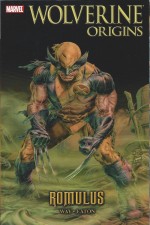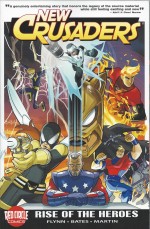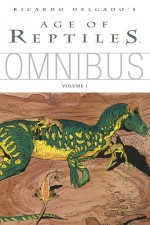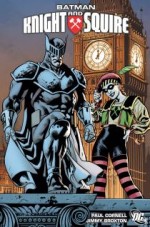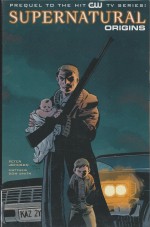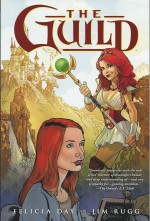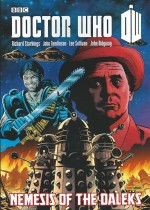
By Richard Starkings, John Tomlinson, John Freeman, Paul Cornell, Dan Abnett, Steve Moore, Lee Sullivan, John Ridgway, Steve Dillon, David Lloyd & many and various (Panini Books)
ISBN: 978-1-84653-531-4
The British love comic strips and they love celebrity and they love “Odd Characters.â€
The history of our graphic narrative has a peculiarly disproportionate amount of radio comedians, stars of theatre, film and TV such as Charlie Chaplin, Arthur Askey, Winifred Atwell, Max Bygraves, Charlie Drake and their ilk, as well as actual shows and properties such as Whacko!, ITMA, Our Gang, (there was a British version of the Hal Roach film sensation by Dudley Watkins in Dandy as well as the American comicbook series by Walt Kelly), Old Mother Riley, Supercar, Pinky & Perky and literally hundreds more.
Anthology comics such as Radio Fun, Film Fun, TV Fun, Look-In, TV Tornado, TV Comic and Countdown amongst others translated our viewing and listening favourites into pictorial escapism every week, and it was a pretty poor lead or show which couldn’t parley the day job into a licensed comic property.
Television’s Doctor Who premiered with part one of ‘An Unearthly Child’ on November 23rd 1963, and the following year his (their?) decades-long association with TV Comic began in issue #674 and the first instalment of ‘The Klepton Parasites’ – so this year marks the 50th or Golden Anniversary of the evergreen show and the 49th (Apoplexium, I believe) of the strip iteration.
On 11th October 1979 (although, adhering to the US off-sale cover-dating system, it says 17th) Marvel’s UK subsidiary launched Doctor Who Weekly, which became a monthly magazine in September 1980 (#44) and has been with us through various title-changes ever since. All of which only goes to prove that the Time Lord is a comic hero with an impressive pedigree and big shoes to fill.
Marvel/Panini is in the ongoing process of collecting every strip from the prodigious annals and archives in a uniform series of over-sized graphic albums, each concentrating on a particular incarnation of the deathless wanderer. This particular one gathers stories from a range of sources (specifically Doctor Who Magazine #152-156, 159-162, The Incredible Hulk Presents #1-12, Doctor Who Weekly #17-20, #27-30 and Doctor Who Monthly #44-46; spanning 1980-1990) and nominally stars the Seventh Doctor -Sylvester McCoy.
Also on show are some awesome ancillary stars from the monolithic Time Lord Universe (Whoniverse?) including the eponymous trundling terrors of the title, legendary cosmic crusaders the Star Tigers and the long-revered tragic, demented antihero Abslom Daak, Dalek-Killer.
Delivered beauty-contest style in reverse order, the magnificent magic opens with the cataclysmic ‘Nemesis of the Daleks’ (from DWM #152-155) as Richard and Steve Alan – AKA Richard Starkings & John Tomlinson – deliver a definitive and classic clash between the nomadic Time Lord and the ultimate foes of life wherein the deadly Daleks enslave a primitive civilisation and drive the pitiful native Helkans to the brink of extinction by forcing them to construct a Dalek Death Wheel armed with the universe’s most potent and toxic Weapon of Mass Destruction.
Grittily illustrated by Lee Sullivan, the blockbuster saga opens with the valiant last stand of incongruous chmpions the Star Tigers before the peripatetic Doctor accidentally arrives in the right place at the wrong time – no surprise there then – and joins death-obsessed Abslom Daak in a hopeless attempt to stop the Emperor of the Daleks from achieving supreme power…
Filled with evocative do-or-die heroics this is a battle only one being can survive…
As a complete change-of-pace, ‘Stairway to Heaven’ (#156 from January 1990 and by John Freeman, Paul Cornell & Gerry Dolan) offers a wry and merrily murderous poke at modern art and the slavish gullibility of its patrons that still holds true today – and probably always will…
The Incredible Hulk Presents was a short-lived reprint weekly from Marvel UK which launched on September 30th 1989, targeting younger readers and featuring four media-fed features.
As well as the Big Green TV sensation it also reprinted American-produced stories of Indiana Jones and GI Joe/Action Force, but the mix was augmented by all-new adventures of the Gallant Gallifreyan by a rapidly rotating roster of British creators.
The plan was to eventually reprint the Who stories in DWM – thus maximising the costly outlay of new material at a time in British comics publishing where every penny counted. It didn’t quite go to plan and the comic folded after 12 issues, with only a couple of the far simpler – though no less enjoyable offerings – ever making it into the more mature magazine publication.
It all began with ‘Once in a Lifetime’ by Freeman & Geoff Senior wherein an obnoxious alien reporter learned to his dismay that some stories are too big even for the gutter press, after which issues #2-3 featured creators Dan Abnett & John Ridgway whose ‘Hunger From the Ends of Time!’ saw the Doctor and Foreign Hazard Duty – the future iteration of UNIT – save the Universal Library from creatures who literally consumed knowledge.
‘War World!’ by Freeman, Art Wetherell & Dave Harwood found the irascible time-traveller uncharacteristically fooled by an (un)common foot soldier, whilst in ‘Technical Hitch’ by Abnett & Wetherell, the Doctor saved a lonely spacer from unhappy dreams of paradise…
Freeman & Senior concocted a riotous, monster-mash for ‘A Switch in Time!’ whilst ‘The Sentinel!’ by Tomlinson & Andy Wildman found the Time Lord helpless before a being beyond the limits of temporal physics who claimed to have created all life in the universe but still needed a little something from Gallifrey to finish his latest project…
Another 2-parter in #8-9 declared ‘Who’s That Girl!’ as the Doctor’s latest regeneration apparently resulted in a female form just as the Time Lord was required to stop an inter-dimensional war between malicious macho martial empires. Of course there was more than met the eye going in this silly but engaging thriller by Simon Furman, John Marshall & Stephen Baskerville.
Simon Jowett & Wildman produced a light-hearted salutary fable as ‘The Enlightenment of Ly-Chee the Wise’ proved that some travellers are too much for even the most mellow of meditators to handle, after which Mike Collins, Tim Robins & Senior proved just how dangerous fat-farms could be in ‘Slimmer!’ before The Incredible Hulk Presents ended its foray into time-warping with the portentous ‘Nineveh!’ by Tomlinson & Cam Smith, wherein the Tardis was ensnared in the deadly clutches of the Watcher at the End of Time – an impossible mythical being who harvested Time Lords after their final regeneration…
For most of its run and in all its guises the Doctor Who title suffered from criminally low budgets and restricted access to concepts, images and character-likenesses from the show (many actors, quite rightfully owning their faces, wanted to be paid if they appeared in print…) but diligent work by successive editors gradually bore fruit and every so often fans got a real treat…
‘Train-Flight’ by Andrew Donkin, Graham S. Brand & John Ridgway ran in DWM #159-161 from April to June 1990 and benefited from some slick editorial wheeler-dealing and the generosity of actress Elizabeth Sladen (who allowed her Sarah Jane Smith character to be used for a pittance) in a chilling tale of alien abductions.
A long overdue reunion between the Time Lord and his old Companion was swiftly derailed when their commuter train was hijacked by marauding carnivorous insects…
‘Doctor Conkerer!’ (#162 by Ian Rimmer & Mike Collins) then terminates the Time Lord’s travails in this tome with a humorous tale describing the unsuspected origins of that noble game played with horse chestnuts beloved by British schoolboys, assorted aliens and, of course, Vikings of every stripe…
There’s still plenty of high quality action and adventure to enjoy here, however, as the complete saga of ‘Abslom Daak, Dalek-Killer’ by Steve Moore and artists Steve Dillon& David Lloyd (from Doctor Who Weekly #17-20, February-March 1980, Doctor Who Weekly #27-30, April 1980 and Doctor Who Monthly #44-46, December 1980-February 1981) fills in the blanks on the doomed defenders of organic life everywhere…
In the 26th century the Earth Empire is in a death struggle with voracious Dalek forces yet still riven with home-grown threats.
One such is inveterate, antisocial killer Abslom Daak, who, on sentencing for his many crimes, chooses “Exile D-K†– being beamed into enemy territory to die as a “Dalek Killerâ€. His life expectancy as such is less than three hours… and that suits him just fine.
Materialising on an alien world the madman eagerly expects to die but finds an unexpected reason to live until she too is taken from him, leaving only an unquenchable thirst for Dalek destruction…
The initial ferociously action-packed back-up series led to a sequel and ‘Star Tigers’ found the manic marauder winning such improbable allies as a rebel Draconian Prince, a devilish Ice Warrior and the smartest sociopath in Human space, all willing to trade their pointless lives to kill Daleks…
As always the book is supplemented with lots of text features, and truly avid fans can also enjoy a treasure-trove of background information in the 17-page text Commentary section at the back, comprising story-by-story background, history and insights from the authors and illustrators, supplemented by scads of sketches, script pages, roughs, designs, production art covers and photos.
This includes full background from former DWM editor/scripter John Freeman on the stories, plus background on the guest stars in ‘Tales from the Daak Side’ by John Tomlinson.
More details and creator-biographies accompany the commentaries on The Incredible Hulk Presents tales and there’s a feature on ‘Hulk meets Who’ explaining that odd publishing alliance, as well as reminisces from editor Andy Seddon and even more info on the legendary Dalek killer and his Star Tiger allies to pore and exult over.
None of which is relevant if all you want is a darn good read. However all the creators involved have managed the ultimate task of any artisan – to produce engaging, thrilling, fun work which can be equally enjoyed by the merest beginner and the most slavishly dedicated and opinionated fans imaginable.
This is another marvellous book for casual readers, a fine shelf-addition for dedicated fans of the show and a perfect opportunity to cross-promote our particular art-form to anyone minded to give comics one more go…
All Doctor Who material © BBCtv. Doctor Who, the Tardis and all logos are trademarks of the British Broadcasting Corporation and are used under licence. Licenced by BBC Worldwide. Tardis image © BBC 1963. Daleks © Terry Nation. All commentaries © 2013 their respective authors. Published 2013 by Panini Publishing, Ltd. All rights reserved.

